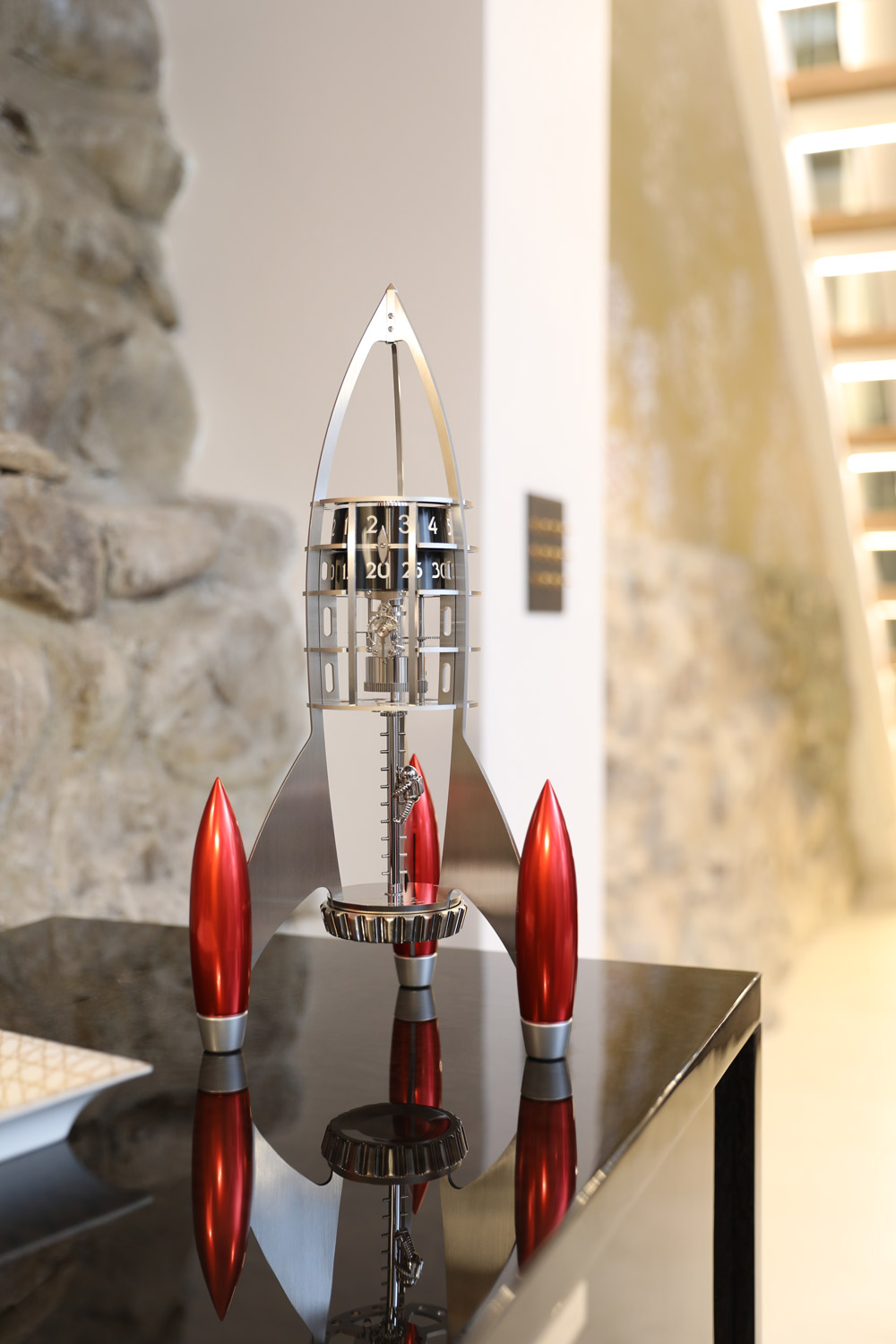Reality sucks! In the 1960s, science fiction had us flying through the air on hoverboards and our imaginations soared, but we ended up with non-hovering boards with wheels on solid ground. Science fiction promised us 3D TV and engi – neers delivered, but we took one look, felt queasy and out they went. Science fiction filled our imaginations with elegant ovoid-shaped rockets that would fly us to the moon and beyond. Again engineers delivered, but the rockets, although eminently practical, ended up being straight, uninspiring cylinders. Some things are best left to the imagination and MB&F’s Destination Moon does just that. It delivers just enough engi – neering for an eight-day clock looking like an exciting science fiction rocket from the 1960s, but with plentiful empty space allowing our imaginations to fill in the details. Conceived by MB&F and built by L’Epée 1839, Switzerland’s premier clock maker, Destination Moon is the quintessential torpedo-shaped rocket of childhood dreams. But look more closely and you will see that its minimalistic form is evocative rather than definitive. Hours and minutes are displayed on large diameter stainless steel discs with stamped numerals. While the legibility of the time display is not in question, focusing on the time rather than the spectacular, vertically-structured, open movement is likely to require deep concentration. Developed specifically for Destination Moon, the architec – ture of L’Epée’s eight-day movement follows the basic design of a real spaceship. Power in a rocket comes from its base; the power for Destination Moon comes from the oversized winding crown in its base.

